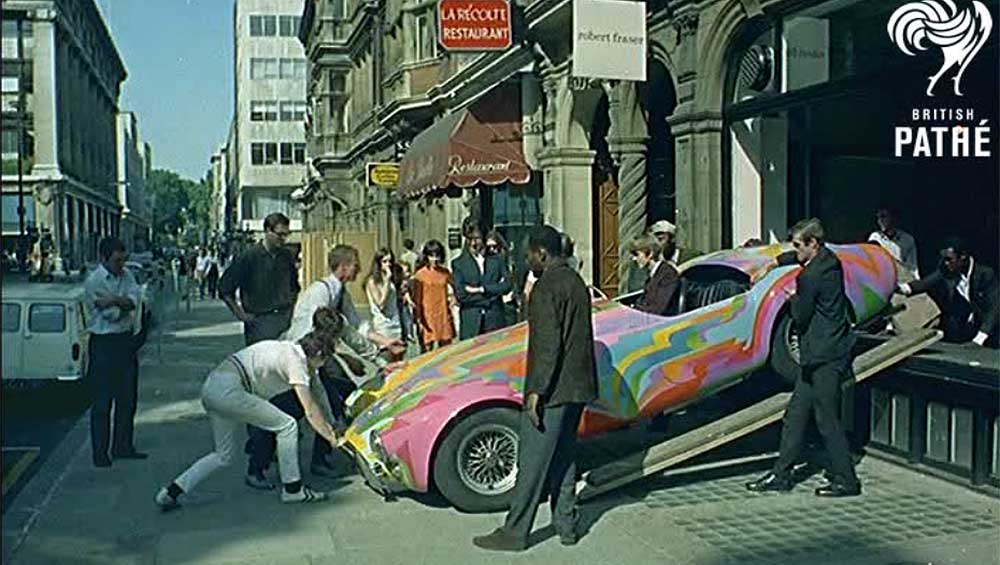
Art On Wheels, 1966. Video, 01:26 mins. Courtesy of British Pathé Archive.
Whitechapel Gallery, London
21 December 2021 – 21 August 2022
by BETH WILLIAMSON
Galleries in the Groove is an archival exhibition exploring the role of the vibrant galleries, dealers and artists who operated in three different independent spaces from the 1960s until the 1980s in London, Antwerp and New York. These gallery spaces nurtured artists, supported new artistic practices and acted to broker wider networks of creative activity, while simultaneously selling work. In this way, they built up new artistic communities and enabled artists to explore new experimental methods in their work. The life of each gallery is conveyed through a collection of archival ephemera, photographs, posters and letters. A central space in the gallery also makes a collection of related books and facsimile documentation available, as well as a 60-minute film (unavailable when I visited), Art & The Sixties: Groovy Galleries, made by BBC Television in 2004, and including Clive Barker, Derek Boshier, Marianne Faithfull, Robert Fraser and Yoko Ono. So, what does the exhibition have to say about the three galleries in question?
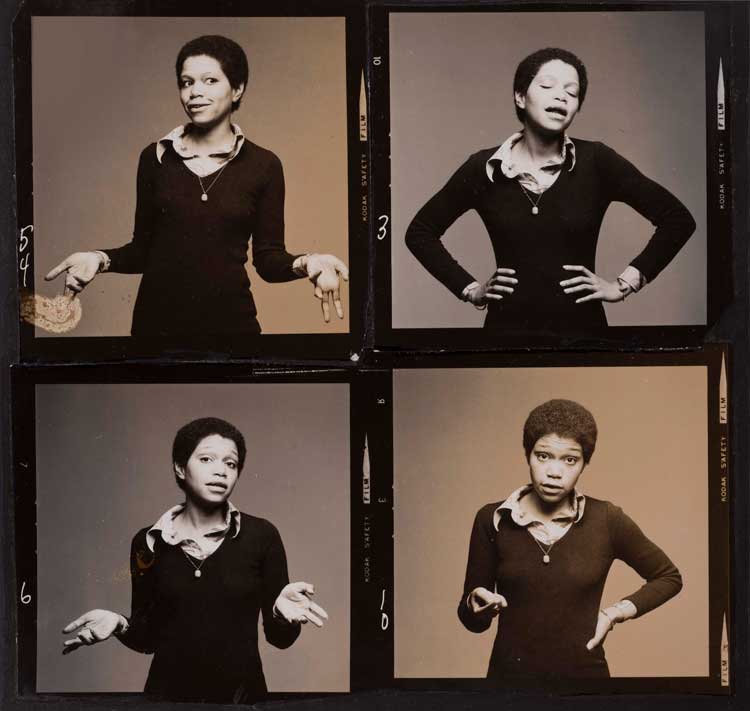
Linda Goode Bryant, 1973. Photo: Dwight Carter. Courtesy Linda Goode Bryant.
Just Above Midtown (JAM), which operated from 1974 to1986, was a New York gallery, led by Linda Goode Bryant (b1949), that worked with artists of colour, becoming an important centre for black culture in the city. JAM’s focus was on performance, dance and music and the community of artists associated with it, who included David Hammons and Senga Nengudi. Among the material shown here are the logo and pages from B Culture magazine, pages from Black Currant magazine (B Culture’s predecessor), as well as photographs of Nengudi’s performance at JAM in 1981 when she collaborated with Butch Morris and Cheryl Banks. There is a poster of workshops held at JAM in 1982 under the title The Business of Being an Artist, which sets out a six-month programme of workshops to support artists in their professional practice and includes everything from funding, residencies and money management to graduate school, conservation and copyright. There are photographs of Hammons with the choreographer and dancer Bill T Jones and the media artist Philip Mallory Jones, showing something of the breadth of the artistic community that formed around JAM. Other photographs show the artist and educator Randy Williams and Goode Bryant herself. On display alongside these is a plethora of written material, including letters to the singers and performers Chaka Khan, Marvin Gaye, Michael Jackson and Aretha Franklin, appealing for sponsorship and participation in Afro-American popular culture programmes. All in all, there is a real sense of JAM bringing visual artists together with performance and music to create an important supportive hub for black culture in New York at that time.
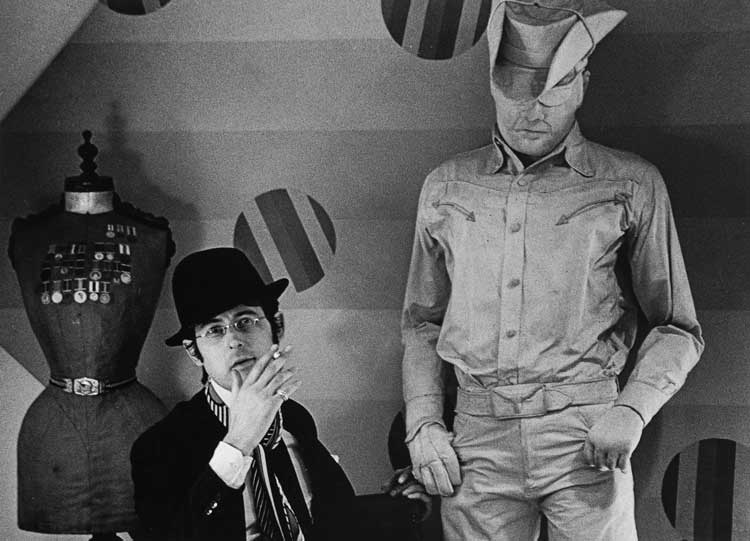
Portrait of Robert Fraser. Photo: Hans Hammarskiöld. © Hans Hammarskiöld Heritage.
London’s Robert Fraser Gallery (1962-69 and 1983-85) was run by the eponymous art dealer, sometimes known as Groovy Bob. Fraser (1937-86) was one of the most flamboyant dealers around and his gallery openings were famous. He showed works by Ed Ruscha, Bridget Riley, Robert Rauschenberg, Jann Haworth and Jim Dine. He also introduced music industry figures such as the Beatles and the Rolling Stones to art collecting. John Lennon and Yoko Ono were part of Fraser’s circle too.
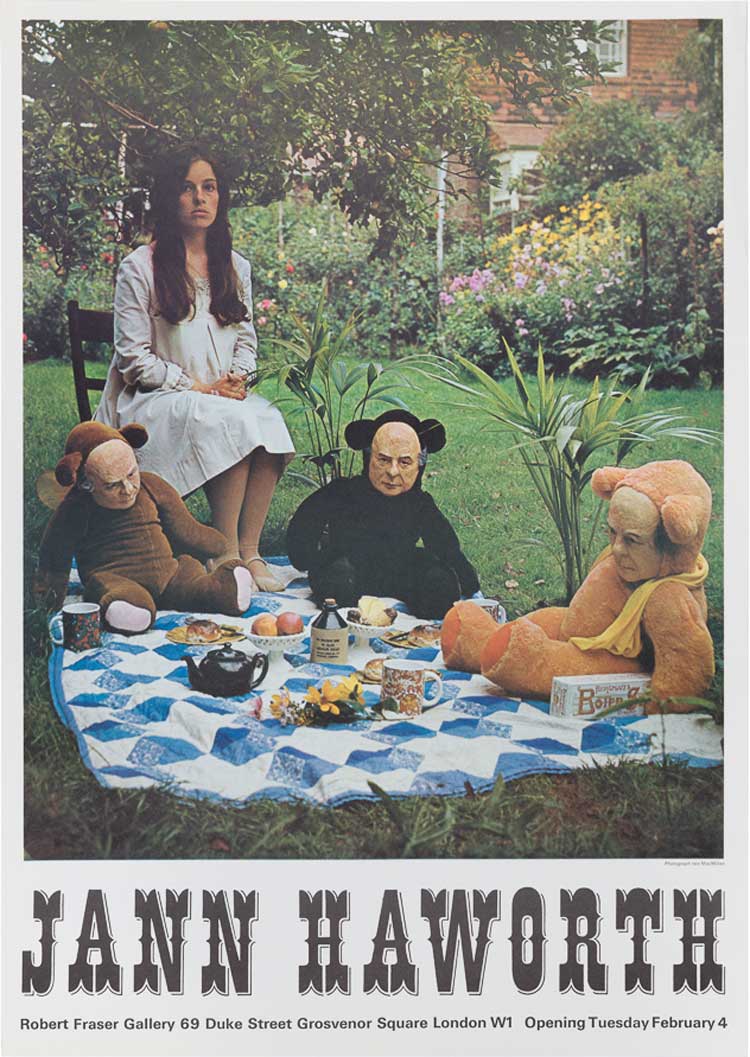
Jann Haworth. Poster for Tea Party at Robert Fraser Gallery, London
1969. Courtesy of Robert Fraser Archive. Photo: Damian Griffiths.
The excitement generated by the gallery and its activities is conveyed by the British Pathé News clip of Art on Wheels from 1966. The clip is on a continuous loop and the voice of an enthusiastic reporter explains the scene as a brightly painted automobile is manoeuvred through the gallery window. “Jazz up your jalopy” was one of the phrases at the time, and you get the sense that Groovy Bob would have enjoyed the spectacle. There are letters and postcards to Fraser from artists including Kenneth Anger, Larry Rivers, Bruce Conner, Ruscha and Wallace Berman. There are photographs, flyers and posters, but two events in the life of Fraser and his gallery dominate this part of the exhibition. In 1966, police raided the gallery and removed 21 pictures by Dine under the vagrancy act that prohibited the display of obscene material. Fraser was later fined for displaying the works, although the court ruled that they were indecent, not obscene. The other event that attracted media attention was captured by Richard Hamilton’s work Swingeing London (1968-9). Hamilton based the work on a newspaper photograph of Mick Jagger handcuffed to Fraser after their appearance in court on drugs charges. Hamilton’s title is a word play on the judge’s swingeing fine and the swinging London scene of which Jagger and Fraser were part.
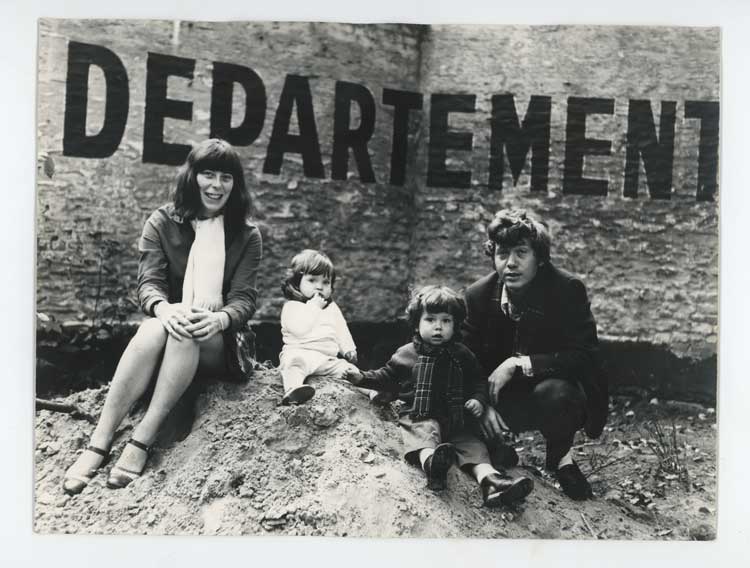
Portrait of Anny de Decker. Marcel Broodthaers, Departement des Aigles, 5 October 1969, Anny de Decker, Stella Jonas and Bernd Lohhaus. Photo: Maria Gilissen.
The art historian Anny de Decker (b1937) and the artist Bernd Lohaus (1940-2010) founded and ran Wide White Space in Antwerp from 1966 to 1976. The gallery featured the work of artists creating conceptual and site-specific works. It is no coincidence that Lohaus was a student of Joseph Beuys. Among the artists they exhibited at Wide White Space were Beuys, Daniel Buren, James Lee Byars and Christo. There are exhibition price lists and invitation cards, including a card/poster for the inaugural exhibition in 1966 with a typeface designed by Hugo Heyrman that was then used for most promotional material for the life of Wide White Space. There are photographs of the artist Panamarenko in Milky Way & Happenings in 1966 and with Heyrman in Stunt Happening the same year. There is an event poster by Beuys for Euraseinstab 82-minute Fluxorum Organum (with Henning Christiansen) on 9 February 1968. There are photographs of Beuys with his work, too, and, for me, it is these that really convey the innovative nature of Wide White Space. Letters to and from artists help to situate the exhibitions and events that took place. For instance, letters between Walter de Maria and De Decker in 1969 frame the exhibition Young American Artists.
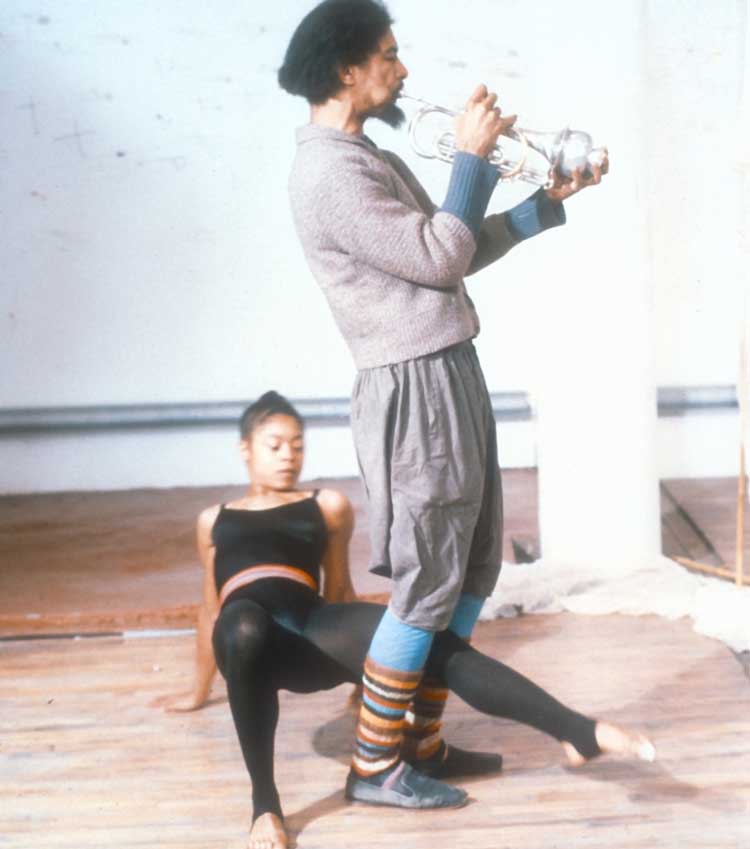
Cheryl Banks (left) and Lawrence “Butch” Morris (right), Vestiges, 1981. Performance in collaboration with Senga Nengudi, Just Above Midtown Gallery (JAM). Image courtesy of Linda Goode Bryant.
All three galleries – Wide White Space, JAM and Robert Fraser Gallery – are shown in this exhibition as crucial spaces not just for artists to show work, but as spaces that supported and nurtured artists, allowing them to develop ideas and extend their creative practice. They each had their own particular focus, but all acted as spaces where artists could experiment and take risks. The material on display here gives a sense of exhibitions, events and creative communities, and galleries you would certainly want to visit if they were still around. It was the people behind the three galleries who were crucial – De Decker, Lohaus, Fraser and Goode Bryant – as all of them were instrumental in changing how audiences, collectors and critics thought about the contemporary art of their time.
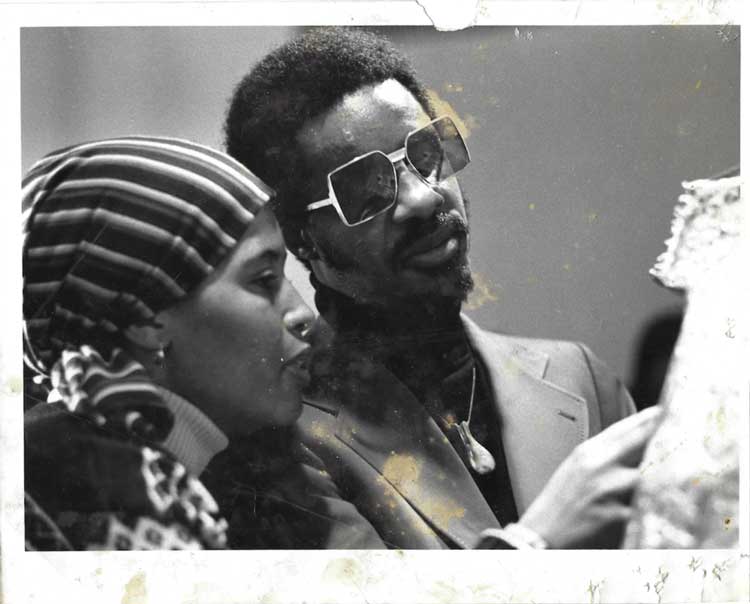
Valerie Maynard describing her sculpture to Stevie Wonder, 1975. Just Above Midtown Gallery (JAM). Image courtesy of Linda Goode Bryant.